
Creating a bee-friendly garden is a simple yet impactful way to support local ecosystems and promote biodiversity. Bees are vital pollinators, essential for the health of many plants, including those we rely on for food. You can transform your garden into a buzzing haven for these crucial insects by choosing the right flowers. These are twelve flowers that will transform your garden into a bee magnet.
1. Bee Balm
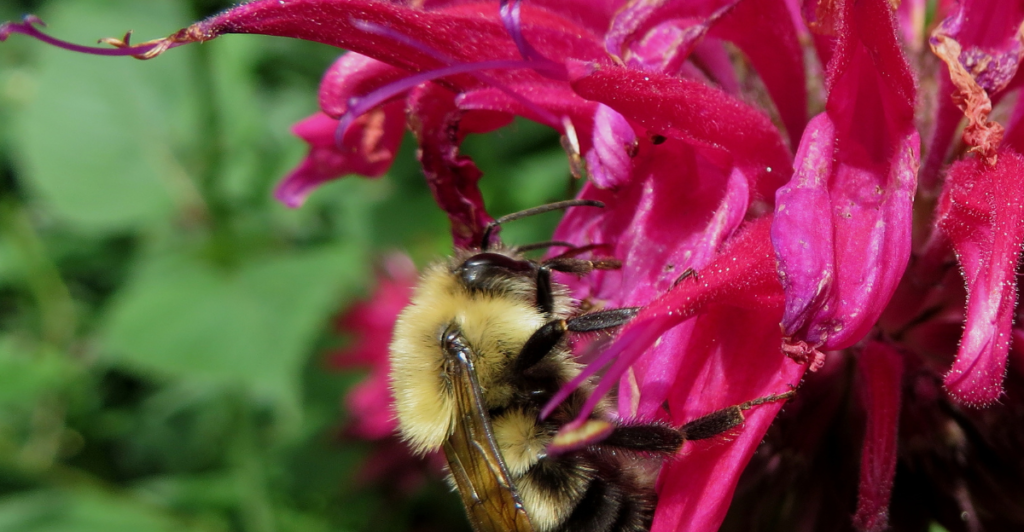
Bee balm, with its vibrant whorls of tubular flowers, is a true bee magnet. This native North American perennial not only attracts bees but also butterflies and hummingbirds. Its aromatic foliage adds sensory appeal to gardens. Bee balm thrives in full sun to partial shade and prefers moist, well-drained soil. For best results, plant different varieties to extend the blooming period from early summer to fall.
2. Lavender

Lavender’s allure extends beyond its soothing fragrance to bees. Its nectar-rich flowers are particularly attractive to honeybees and bumblebees. This drought-tolerant Mediterranean herb prefers full sun and well-drained soil. Plant lavender in raised beds or containers to improve drainage. Regular pruning after flowering helps maintain its compact shape and promotes more blooms in subsequent seasons.
3. Coneflower
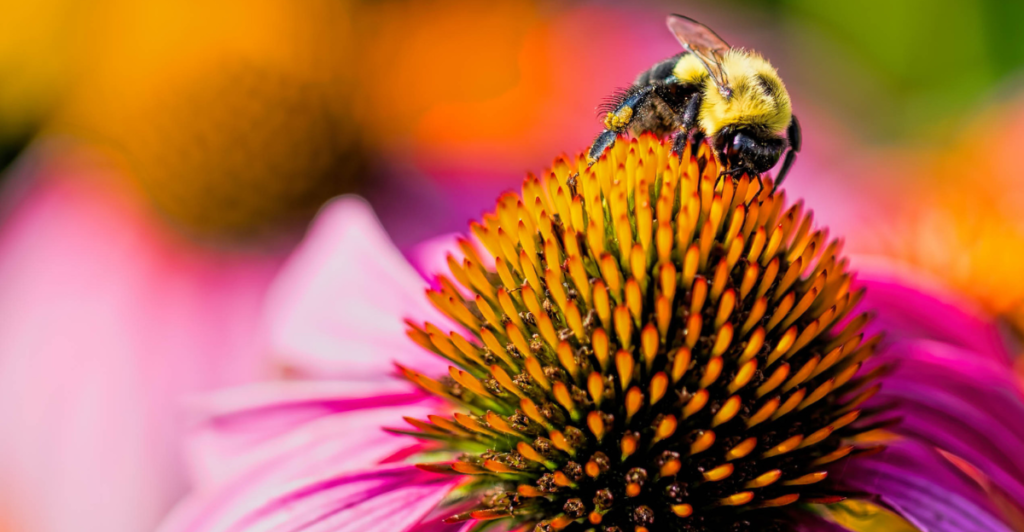
Coneflowers are not only beautiful but also highly beneficial for pollinators. Their large central cones provide a landing platform for bees and are packed with nectar and pollen. These hardy perennials are drought-tolerant once established and bloom for extended periods. Deadheading spent flowers can encourage additional blooms, but leaving some seedheads in place provides food for birds in winter.
4. Sunflower

Sunflowers are a powerhouse for pollinators, offering both nectar and pollen in abundance. Their large, open faces make it easy for bees to access the rewards. For maximum bee benefit, choose open-pollinated varieties rather than pollen-free hybrids. Sunflowers are easy to grow from seed and can reach impressive heights, making them a striking addition to any garden.
5. Zinnia

Zinnias are a favorite among gardeners and bees alike. These cheerful annuals come in a wide range of colors and sizes, blooming prolifically from summer until frost. Their flat, open flowers provide easy access for bees of all sizes. Zinnias are heat-tolerant and thrive in full sun. Regular deadheading encourages continuous blooming throughout the season.
6. Borage

Borage, with its striking blue star-shaped flowers, is a bee’s delight. This annual herb is known for its ability to replenish nectar quickly, ensuring a constant supply for pollinators. Borage is easy to grow from seed and self-seeds readily, making it a low-maintenance addition to any garden. Its cucumber-flavored leaves are also edible, adding culinary interest to your bee-friendly garden.
7. Chives
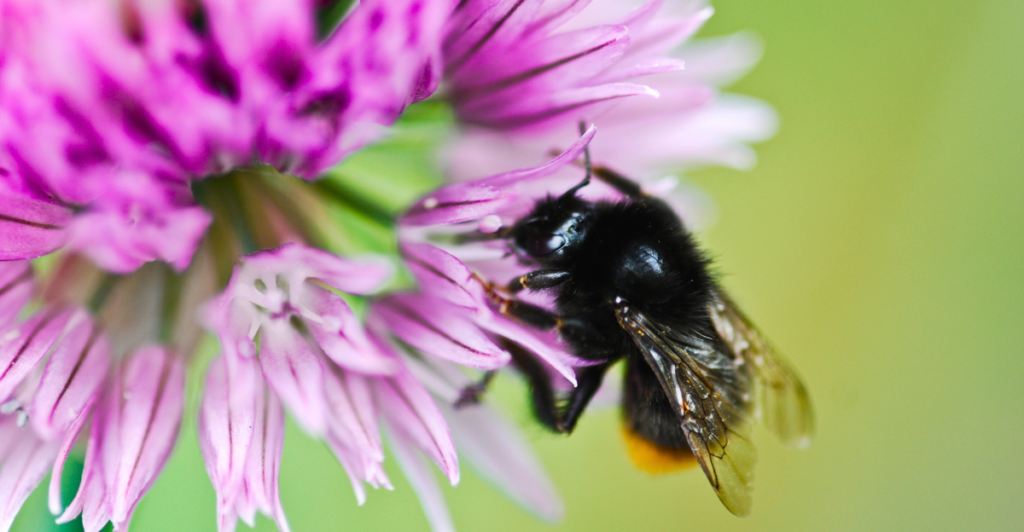
Chives are not only a versatile culinary herb but also an early-season bee attractor. Their purple, globe-shaped flowers appear in spring, providing crucial nectar for bees emerging from winter dormancy. Chives are easy to grow, thrive in most soil conditions, and can be planted in gardens or containers. Allowing some flowers to go to seed ensures a continuous supply of new plants.
8. California Poppy

The vibrant, cup-shaped flowers of California poppies are irresistible to bees. These native wildflowers are drought-tolerant and easy to grow from seed. They prefer full sun and well-drained soil. California poppies are excellent for naturalizing areas and will self-seed if allowed. Their fern-like foliage adds texture to the garden even when not in bloom.
9. Anise Hyssop
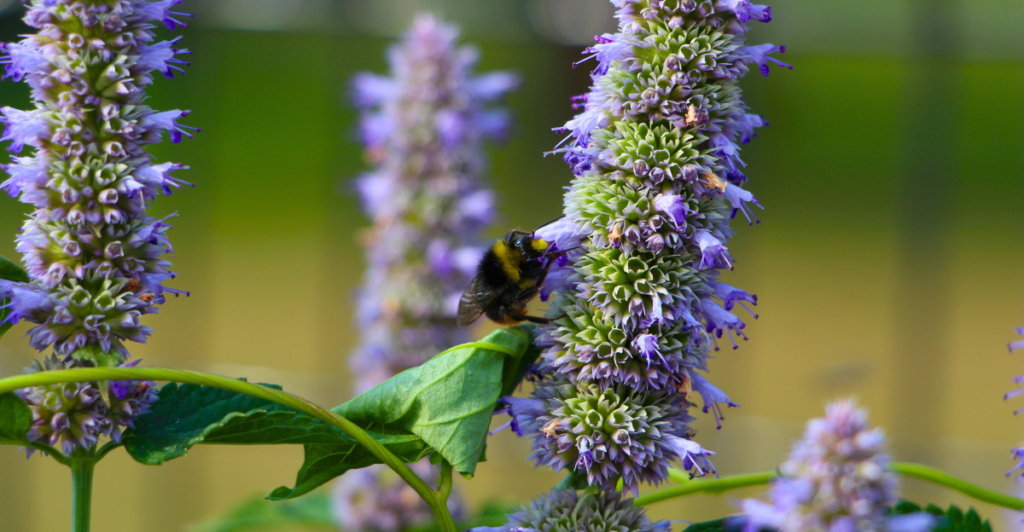
Anise hyssop, a member of the mint family, produces tall spikes of lavender-blue flowers that bees find irresistible. This hardy perennial has a long blooming period from midsummer to fall. Its licorice-scented leaves can be used in teas or cooking. Anise hyssop is drought-tolerant once established and attracts a wide variety of pollinators, including bees, butterflies, and hummingbirds.
10. Cosmos
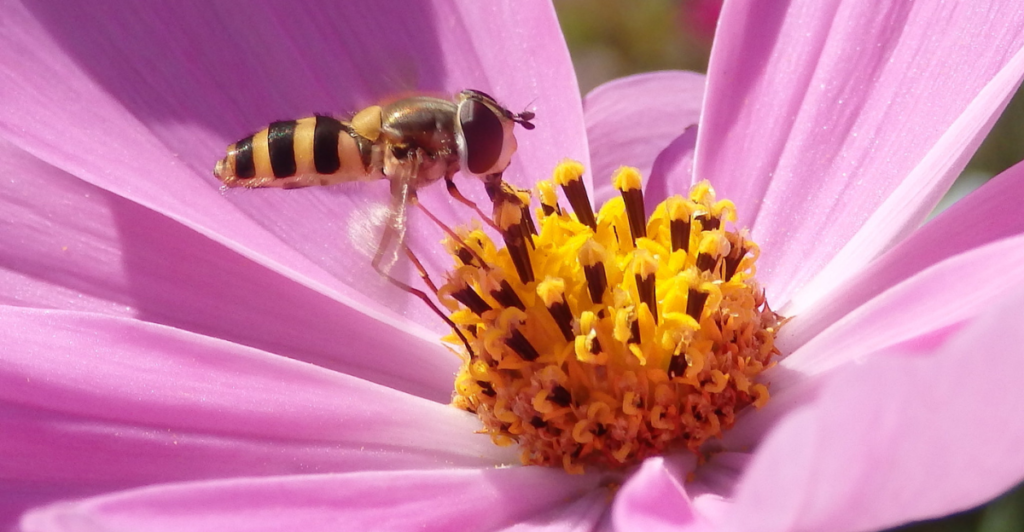
Cosmos are easy-to-grow annuals that provide a bounty of nectar for bees. Their daisy-like flowers come in shades of pink, white, and red, blooming from summer until frost. Cosmos thrive in full sun and average soil, making them ideal for low-maintenance gardens. They’re also excellent for cutting gardens, providing long-lasting blooms for indoor arrangements.
11. Hollyhock

Hollyhocks are tall, stately plants that serve as vertical accents in the garden while attracting bees. Their large, open flowers in various colors are easily accessible to pollinators. Although typically biennial, hollyhocks often self-seed, creating a continuous presence in the garden. They prefer full sun and well-drained soil and benefit from staking to support their tall stems.
12. Foxglove
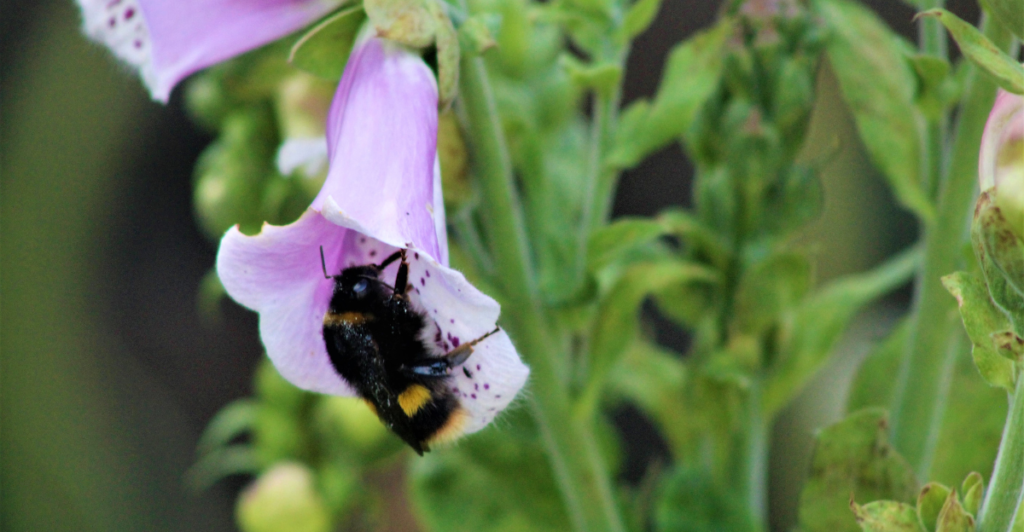
Foxgloves produce tall spikes of tubular flowers that are perfectly shaped for bees to crawl inside. These biennial or short-lived perennial plants add vertical interest to gardens and thrive in partial shade. Foxgloves are particularly attractive to long-tongued bees like bumblebees. While beautiful, it’s important to note that all parts of the plant are toxic if ingested, so care should be taken in gardens frequented by children or pets.
Source:
Flowers That Make Your Garden More Bee-Friendly
Disclaimer: This article was written with the assistance of AI and was edited/fact-checked by a human.
Stay connected with us for more stories like this! Follow us to get the latest updates or hit the Follow button at the top of this article, and let us know what you think by leaving your feedback below. We’d love to hear from you!







